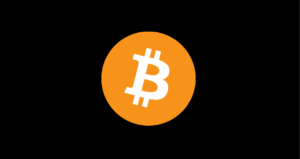Amidst the evolving landscape of cryptocurrency, one project that has been garnering attention for its innovative approach is Matic Network. Matic Network, now known as Polygon, aims to improve the scalability and user experience of blockchain platforms, particularly Ethereum, through its layer 2 solution.
Polygon provides a framework for building and connecting Ethereum-compatible blockchain networks. It functions as a scaling solution by using sidechains, which operate alongside the Ethereum mainchain. This approach enables faster and cheaper transactions while leveraging Ethereum’s security properties. By offloading transactions to sidechains, Polygon significantly reduces congestion on the main Ethereum network, thus enhancing overall performance.
One of the core features of Polygon is its scalability. By utilizing various scaling techniques such as Plasma chains, ZK-Rollups, and Optimistic Rollups, Polygon significantly enhances transaction throughput. This scalability not only improves the user experience by reducing transaction costs and confirmation times but also makes decentralized applications (dApps) more accessible to a broader audience.
Moreover, Polygon’s architecture is designed to be modular and flexible, allowing developers to customize their blockchain networks based on specific requirements. This flexibility enables projects to choose the scaling solution that best fits their needs, making development more efficient and cost-effective.
In addition to its technical capabilities, Polygon has gained significant traction in the decentralized finance (DeFi) space. Several DeFi projects have integrated with Polygon to take advantage of its scalability benefits. This integration has resulted in increased adoption and usage of DeFi applications, further bolstering the growth of the ecosystem.
Furthermore, Polygon has also made significant strides in increasing interoperability within the blockchain space. By collaborating with other prominent projects and protocols, Polygon has facilitated seamless asset transfers and communication between different blockchain networks. This interoperability enhances the overall efficiency and usability of the entire decentralized ecosystem.
Polygon’s native token, MATIC, plays a crucial role within the network. MATIC serves as the fuel for various operations on the Polygon network, including paying for transaction fees and participating in network governance. The token has seen substantial growth in value and adoption, reflecting the increasing utility and demand for the Polygon ecosystem.
Looking ahead, Polygon continues to expand its capabilities and partnerships to further enhance the scalability and usability of blockchain technology. With a strong focus on user experience and developer-friendly tools, Polygon is well-positioned to play a significant role in shaping the future of decentralized applications and blockchain infrastructure.
In conclusion, Polygon, formerly Matic Network, represents a critical advancement in addressing the scalability challenges faced by blockchain platforms like Ethereum. Through its innovative layer 2 solution and commitment to enhancing user experience, Polygon is paving the way for a more efficient and accessible decentralized ecosystem.

